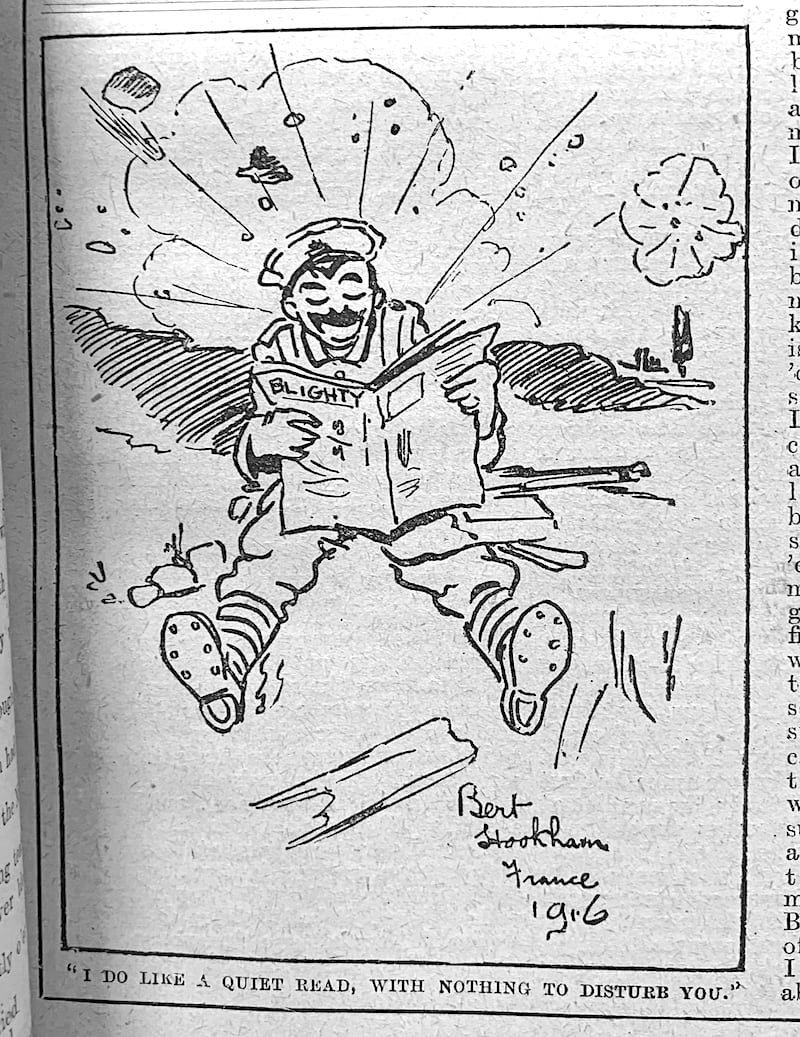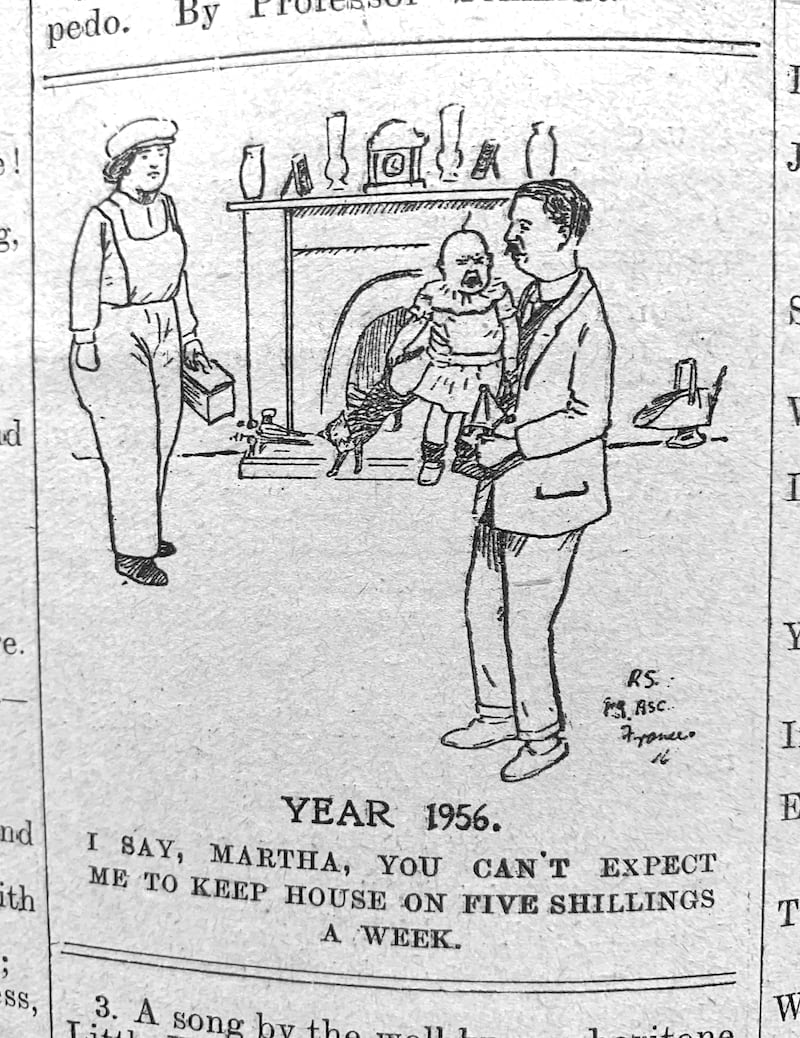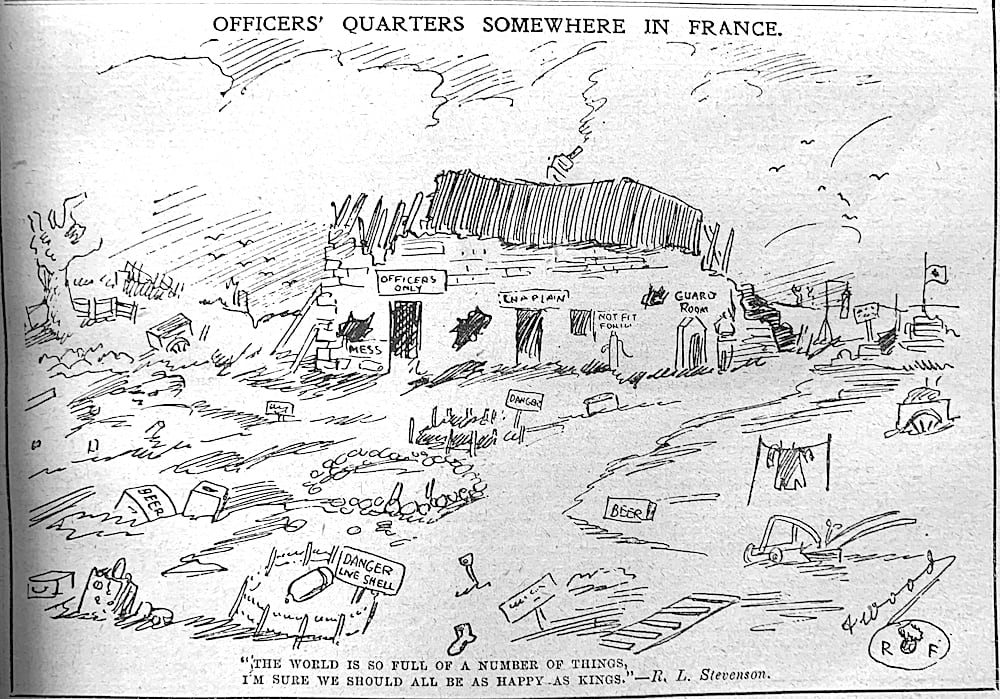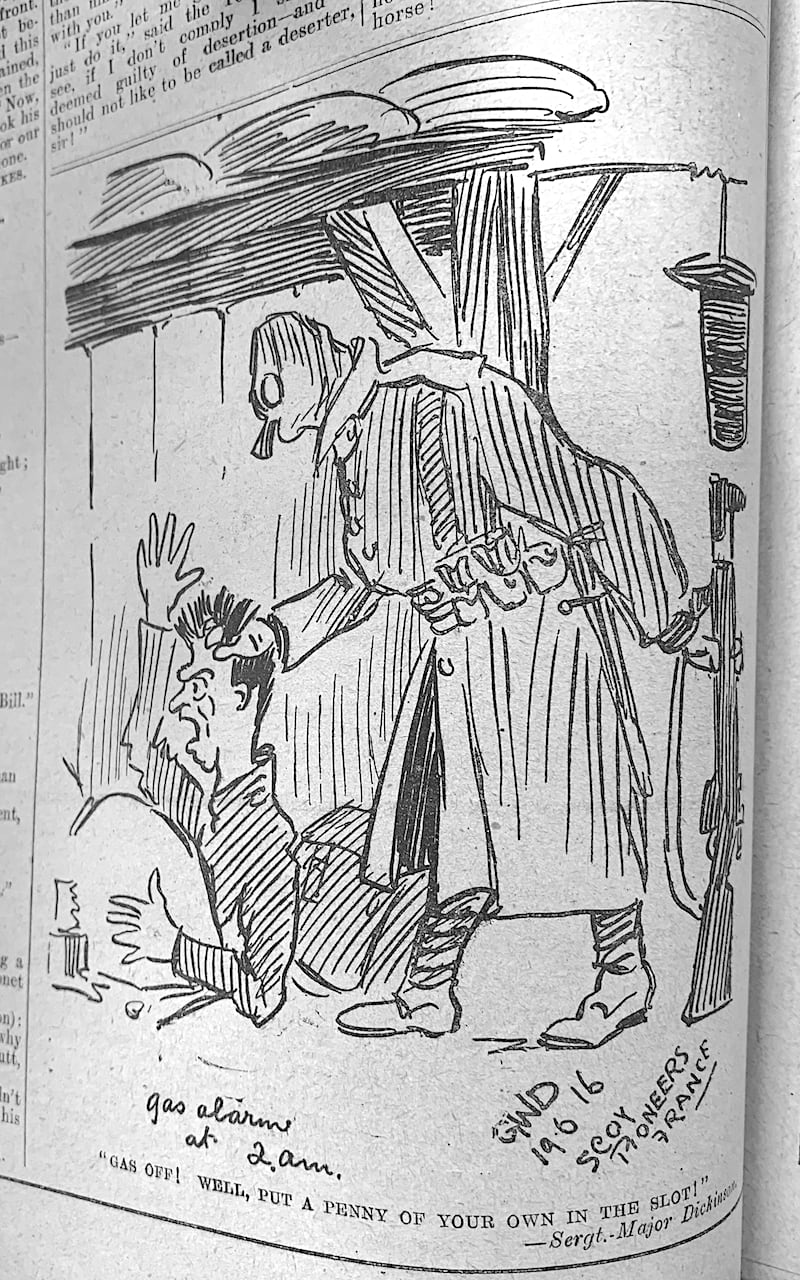Blighty Mystery File No.1
This is the first 'Mystery File' relating to the soldier-cartoonists who had their contributions published in Blighty but, at this moment in time, the trail has gone cold as I have been unable to find any further information about them — though I am not ready to give up.
First, getting published in Blighty brought more than just a guinea's payment, it also came with certain blagging rights or a badge of honour. In the case of Second-Lieutenant Harry Cotton, the Field Meteorologist for the Forth Army, a visit to the archives revealed — buried in a mass of meteorological charts and scientific paraphernalia — a single issue of Blighty, featuring a cartoon that he had drawn.1 Second, it is highly unlikely that the cartoon that these mystery soldier-cartoonists had published was the only cartoon they ever drew. While not directly related to Blighty, I bought some unidentified drawings a short while back as there was something 'familiar' about them. They turned out to be by the silhouette artist Hubert Leslie (1890-1976) whom I had come across during my research into Trench Journals. Leslie was the editor on Lines of Fire, the magazine of the Royal Garrison Artillery Cadet School, Trowbridge, and it turned out the images I bought were originals for the periodical. Third, one of the things I have noticed in a few of the more prolific cartoonists is that their signatures tended to evolve as their drawing did. While they might have left an illegible scribble at the start, later work is more clearly identifiable — it is just a case of finding those cartoons.
As I can't speak about the cartoonists here, I thought I would instead talk about the cartoons and how they fit into the wider-corpus of Soldier-Cartoons.
Bert Hookham, France 1916

Bert Hookham shares the credit with one of the cartoonists already written up here, Private Richard Collins, as being one the first soldier-cartoonists to feature in Blighty.
Across the 820 cartoons I surveyed as part of my dissertation, cartoons featuring a soldier reading the publication in which the cartoon appeared were not common, but there are examples out there — including at least four examples in Blighty. Most of the time, when a magazine appeared in its own cartoon, it was normally the editorial staff making a behind-the-scenes joke, such as an example from the Sphinx showing a queue of irate soldiers queuing up to complain to the Editor.2 More common is the sangfroid attitude on display, a theme that appeared in 1 in 8 cartoons.
RS. ?? ASC, France 1916

This cartoon is unusual, as while there were a number of cartoons that considered the subject of a long war, they tended to be more prevalent in 1917 when war-weariness was kicking-in. Cartoons that featured the subject of war in 1916 tended to be more around the subject of the wider war, and compared to 1915, more focused on domestic issues — such as rising inflation, women workers, and 'slackers' — those who had yet to take up the call.
F. Wood RF

In this wonderfully cluttered drawing, Woods has given his own take on the two-line poem 'Happy Thought', by Robert Lewis Stevenson, which appeared in A Child's Garden of Verses (1885) — a book of poetry for children, in which Stevenson recalls his childhood joys and cares.3 In terms of inspiration behind cartoons, literature was one of the major influences drawn on, with soldiers taking quotes and scenes from a thick canon of works; other cartoons featured elements from authors such as Charles Lamb, Rudyard Kipling, Alexander Pope, and George Elliot. Notably, this love of literature was evident across all ranks.
Sergeant Major GW Dickinson S Coy Pioneers, France

Two elements stand out from Dickinson's cartoon. The first is the reference to 'home life' (5% of cartoons surveyed) in having to put a penny in the gas meter. The second is in the way humour was employed. It downplays the threat of a 'gas attack' by using a process which psychologists call normalisation: by associating a gas attack with the penny in the meter, Dickinson is demonstrating 'reversal' — trying to find humour in a distressing situation, and 'minimisation — downplaying the risks'.4 When the risk is minimised to an everyday level it thus becomes normalised. Jokes were often shared in several formats, and I wonder if some private, with bravado, actually once said it out aloud during an actual gas alarm — there are plenty of accounts of soldiers employing soundbites; Sergeant Major Keeling, 6th Battalion DCLI, wrote that the phrase 'Where did that one go?', in reference to a Bairnsfather cartoon, could be heard from the men across the Western Front with every shell burst, noting darkly that it was even funnier 'if you reflect the "next one" may by force majeure prevent you from making any inquiry at all'.5
As always, if you have any information that may help identify these chaps, please get in contact either by leaving a comment below or clicking the link in my Bio.
-
Liddle Collection, LIDDLE/WW1/GS/0371, H. Cotton personal papers. ↩︎
-
The Sphinx, 1 June 1916, p.14. ↩︎
-
Robert Louis Stevenson, A Child's Garden of Verses (London: Longmans & Green, 1885). ↩︎
-
M. H. Abel, 'Humour, Stress and coping Strategies', Humour, 15(4) (2002), p.368. ↩︎
-
E.T, Keeling Letters and Recollections (London: George Allen, 1918), p.278. ↩︎
Posts in this series
- Soldier-Cartoonist: Private Louis Ollier, 8th Cheshire Regiment
- Soldier-cartoonist: Private Alfred Edmeades Bestall, Army Service Corps
- Blighty Mystery File No.1
- Soldier-cartoonist: Corporal Bertie Inward, 2/19th London Regiment
- Soldier-cartoonist: Private Richard Collins, 12th Battalion East Surrey
- Solider-cartoonist: Corporal Gontran De Tournoüer, 11th Field Artillery Brigade, Australian Imperial Force.
- Soldier-cartoonist: Lance Corporal Gilbert Tom Webster 26th Royal Fusiliers
- Soldier-cartoonist: Private Charles "Chas" William Holt, 16th Sherwood Foresters [Unconfirmed]
- Soldier-cartoonist: Corporal Robert Birrell, 17th Highland Light Infantry
- The ‘Budding Bairnsfathers’ : First World War Soldier-cartoonists Published in Blighty